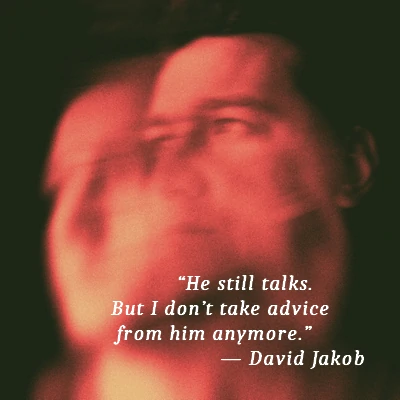There’s a voice in my head. I’ve named him. He’s called The Gabbler.
He doesn’t sleep. He’s there in the morning before I open my eyes, already commenting on how I slept, what I should do next, and whether I’m likely to succeed or fail. He questions, compares, warns, accuses, and—oddly—sometimes flatters. He’s relentless.
Prem Rawat calls it “The Noise.” That endless, internal chatter the mind produces, regardless of the situation. My version has a personality: slightly anxious, often smug, always certain he knows what’s best for me. I call him The Gabbler because that’s what he does. Non-stop.
The Gabbler’s Origins: Evolution’s Gift?
I don’t blame him entirely. Part of this inner noise comes from an ancient place. Our species needed minds that could anticipate danger and remember painful lessons. “Don’t eat that mushroom again.” “Stay away from the lion’s den.” The chatter may have saved lives once.
The human brain evolved to look for problems, even when there aren’t any. That habit didn’t go away just because we invented calendars and cappuccinos. So now the Gabbler works overtime, trying to be helpful in a world where physical survival isn’t under daily threat.
He worries about things like inboxes and reputations instead of wild animals and famine. But it’s the same machinery. Same fear, different wardrobe.
How the Gabbler Learned to Speak
What gave the Gabbler his vocabulary wasn’t nature—it was nurture. Parents, teachers, priests, bosses, experts. All contributed lines to the script. Each criticism, each warning, each moment of embarrassment was noted and stored.
He mimics authority figures. He adopts their tone. Sometimes I catch a phrase and realise: that’s not even mine. A stern schoolmaster from 1964 still lives rent-free in my head, occasionally scolding me when I spill the tea.
This is what conditioning does. It turns memories into messages that repeat, often without context or compassion. And over time, The Gabbler begins to sound like “me.”
The Now: Where the Gabbler Fades
But there’s something I’ve discovered. Something deeper than all the chatter. Something simple. Something real.
It’s called Now.
It’s not a place. Not a belief. It’s not something to achieve. It’s the moment that breathes. It doesn’t shout. It doesn’t justify itself. It just is.
And when I give my attention to this breath—this inhale, this exhale—the Gabbler quiets down. Sometimes he leaves. Sometimes he mumbles from a distance. But he’s not in charge anymore.
Prem Rawat once said, “There’s a place in you that’s untouched by the noise.”
That’s the place I go when I remember. When I choose to come back to this breath, this moment, this awareness. Not to analyse it, but to experience it.
Living with the Gabbler
I don’t try to kill the Gabbler. He’s part of the package. But I’ve learned not to take advice from him.
He means well, in his own misguided way. But his obsession with past and future keeps him blind to the only place life is actually happening: here. Now.
So I let him talk. I smile at his urgency. But I don’t follow him. I’ve found a deeper guide—one that doesn’t speak in words.
A Gentle Suggestion
If you’re aware of your own Gabbler—or Noise—try giving it a name. It helps. Make it less mysterious. Notice how often it’s talking. Notice how rarely it’s helpful.
And then, just once today, stop. Feel your breath. Not think about it—feel it. Be here, without analysis. See if the Gabbler gets bored. He probably will.
And in that silence, you might hear something else:
Not a voice, but a feeling.
A presence.
A quiet joy.
You.


Comments powered by CComment